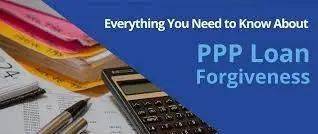Exploring Student Loan Forgiveness and Disability: A Comprehensive Guide to Financial Relief
#### Student Loan ForgivenessStudent loan forgiveness refers to the cancellation of a borrower's obligation to repay some or all of their student loans. Thi……
#### Student Loan Forgiveness
Student loan forgiveness refers to the cancellation of a borrower's obligation to repay some or all of their student loans. This can be a significant relief for many individuals, especially those facing financial hardships. Various programs exist that allow borrowers to qualify for forgiveness based on specific criteria, such as employment in public service, teaching in low-income areas, or experiencing financial distress.
#### Disability
Disability, in the context of student loans, often refers to a condition that prevents an individual from maintaining gainful employment. The U.S. Department of Education has provisions in place that allow borrowers who are permanently disabled to have their federal student loans discharged. This can provide critical financial relief to those who are struggling with the burden of student debt while managing disabilities.
### Detailed Description

Navigating the complex landscape of student loans can be overwhelming, especially for those who are also dealing with disabilities. Fortunately, there are programs designed to alleviate some of this burden through student loan forgiveness and disability-related discharges.
#### Understanding Student Loan Forgiveness
Student loan forgiveness is a crucial option for many borrowers. It primarily targets those who have committed to public service careers or who meet specific income-driven repayment criteria. Programs like Public Service Loan Forgiveness (PSLF) allow borrowers who work in qualifying jobs—such as teaching, nursing, or non-profit sectors—to have their remaining loan balance forgiven after making a certain number of qualifying payments. This can be a game-changer for individuals who have dedicated their careers to serving their communities.
Additionally, there are income-driven repayment plans that can lower monthly payments based on income and family size. After a set number of years—typically 20 or 25 years—any remaining balance may be forgiven. This is particularly beneficial for borrowers who may not have the financial means to pay off their loans in the traditional timeframe.
#### The Intersection of Disability and Student Loan Forgiveness
For individuals with disabilities, managing student loans can be particularly challenging. Fortunately, the federal government offers a discharge option for borrowers who are totally and permanently disabled. This means that if a borrower can provide documentation of their disability, they may be eligible to have their federal student loans discharged entirely. This can provide significant financial relief and allow individuals to focus on their health and well-being rather than the stress of student debt.
To qualify for this discharge, borrowers must submit documentation from a physician or the Social Security Administration. It’s important to note that this process can be complex, and many borrowers may benefit from seeking assistance from financial advisors or legal professionals who specialize in student loans and disability rights.
#### Conclusion
The intersection of student loan forgiveness and disability presents unique challenges and opportunities for borrowers. Understanding the available options can empower individuals to take control of their financial futures. Whether through public service forgiveness programs or disability discharges, there are pathways available to alleviate the burden of student loans.
If you or someone you know is struggling with student loans and a disability, it’s essential to explore these options thoroughly. Reach out to financial aid offices, legal advisors, or disability advocacy groups for guidance. With the right information and support, it’s possible to navigate this challenging landscape and find relief from the pressures of student debt.